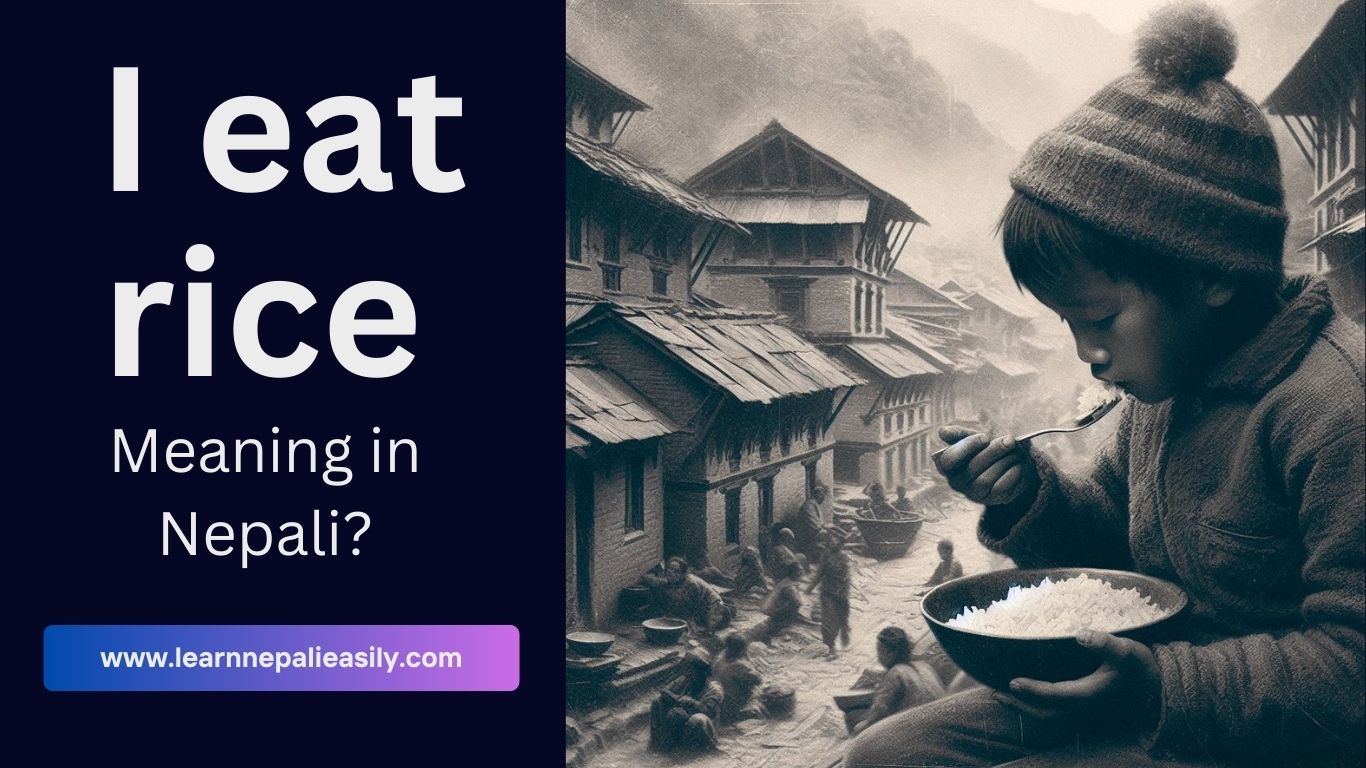The phrase “I eat rice” is a simple sentence often used in daily conversations. For those curious about its meaning and usage in Nepali, this blog will provide a detailed explanation along with translations in Nepali. By the end of this post, you will be able to use the sentence “I eat rice” confidently in Nepali.
Meaning of “I Eat Rice” in Nepali
In Nepali, “I eat rice” translates to “Ma Bhat Khanchu” (म भात खान्छु।). This sentence describes the act of eating rice, which is a staple food in Nepali households.
Breakdown of the Sentence
- I – Ma (म)
- Eat – Khanchu (खान्छु)
- Rice – Bhat (भात)
Together, it forms: Ma Bhat Khanchu. (म भात खान्छु।)
Examples of Usage
| English | Nepali | Pronunciation |
| I eat rice daily. | म दिन दिनै भात खान्छु। | Ma din dinai bhat khanchu. |
| Do you eat rice? | तिमी भात खान्छौ? | Timi bhat khanchau? |
| We eat rice together. | हामी सँगै भात खान्छौं। | Hami sangai bhat khanchau. |
- Present Tense
English: I eat rice.
Nepali: Ma bhaat khanchu. (म भात खान्छु।)
- Past Tense
English: I ate rice.
Nepali: Maile bhaat khayein. (मैले भात खाएँ।)
- Future Tense
English: I will eat rice.
Nepali: Ma bhaat khanechu. (म भात खानेछु।)
Cultural Context
Rice, or भात (Bhat), is an integral part of Nepali cuisine. It is typically eaten with lentils (दाल – Daal) and vegetables. Learning this phrase helps you connect with Nepali culture, especially when dining with locals.
Conclusion
By understanding and practicing sentences like “I eat rice” in Nepali, you can build a strong foundation for conversational skills in the language. Start practicing today!

